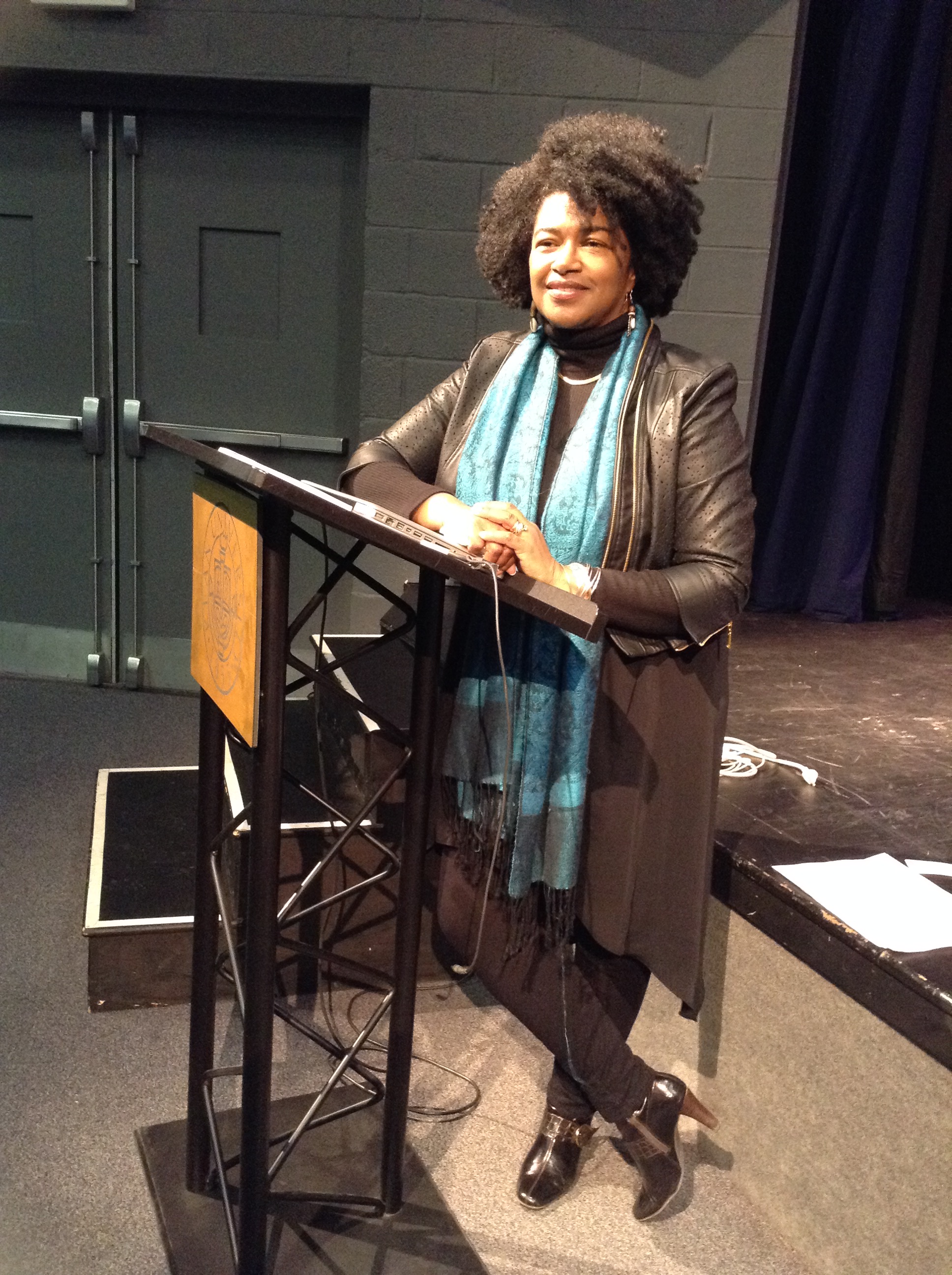Dr. Ellis-Williams captures the audience with her presentation.
By Sade Cox
In honor of March’s Women’s History Month, Dr. Antoinette Ellis-Williams analyzes the impact of cultural misuse on the racial identity of Black young women through popular culture.
Ellis-Williams, a women and gender studies professor at New Jersey City University, delivered a presentation entitled “When the Booty is White: Race, Identify, Appropriation & the Lingering Sarah Baartman Effect on Young Black Women.”
It explored how African-American women are still poorly depicted in the media, examined gender stereotypes of women in the media and explained perceptions of beauty standards for African-American women.
The media’s fascination with Kim Kardashian, Iggy Azalea, Shakira and Coco’s behinds is only a recent example of the appropriation of women’s beauty. Before Kim Kardashian “broke” the internet, Sarah “Saartjie” Baartman was the first woman who was exploited among race and gender lines.
Sarah “Saartjie” Baartman was born a slave in Cape Town, South Africa where she was discovered by a British doctor, William Dunlop, who persuaded her to travel to England with him to be the main attraction in hopes to gain her freedom.
She was forced to put herself on display in a building and paraded around naked in circuses, museums, bars and universities and told to show off her protruding posterior.
“Racialization involves attaching racial meaning to a previously racially unclassified relationship, social practice, or group,” explained Ellis-Williams.
Kim Kardashian infamous “Break the Internet” photographs from Paper Magazine show her balancing a champagne glass on her rear end dressed in a black sequin dress.
Another photograph shows Kim Kardashian posing half naked exposing her backside to the public. The poses were a remake of an African-American model Carolina Beaumont who did the same pose, however, she was naked just as Sarah Baartman.
“Black women are often demonized or criticized for their body features,” Ellis-Williams stated. “Serena Williams, Grace Jones, Nicki Minaj, and Rihanna have all received negative backlash for their shapes or for displaying their bodies in a similar fashion as white celebrities. On the other hand, some Black women continue to feel compelled to exploit their bodies for fame and fortune, in the guise of sexual liberation.”
There is a racial double standard for African-American and white women to be socially accepted when it comes to objection of body images, Ellis-Williams noted.
Female rapper, Nicki Minaj received harsh criticism after she revealed the song cover for the song “Anaconda” on Instagram where is posed in a squatting position displaying her rear end. However, Sports Illustrated models posed on the cover of the magazine displaying their behinds. The images sparked a debate on which pose was acceptable or unacceptable.
“Objectification of women comes in all colors,” stated Ellis-Williams.
“What people have to understand is that racism is huge especially with women and gender,” stated Keira Davis, a senior majoring in psychology at Kean. “There is a double standard of black and white women in media.”
Throughout the month, the women’s studies program hosted various events such as lectures, presentations, films, and readings in honor of March’s Women’s History Month. Dr. Celen Krauss, Dr. Abigail Perkiss, and Dr. James Conyers were just a few of the speakers.

